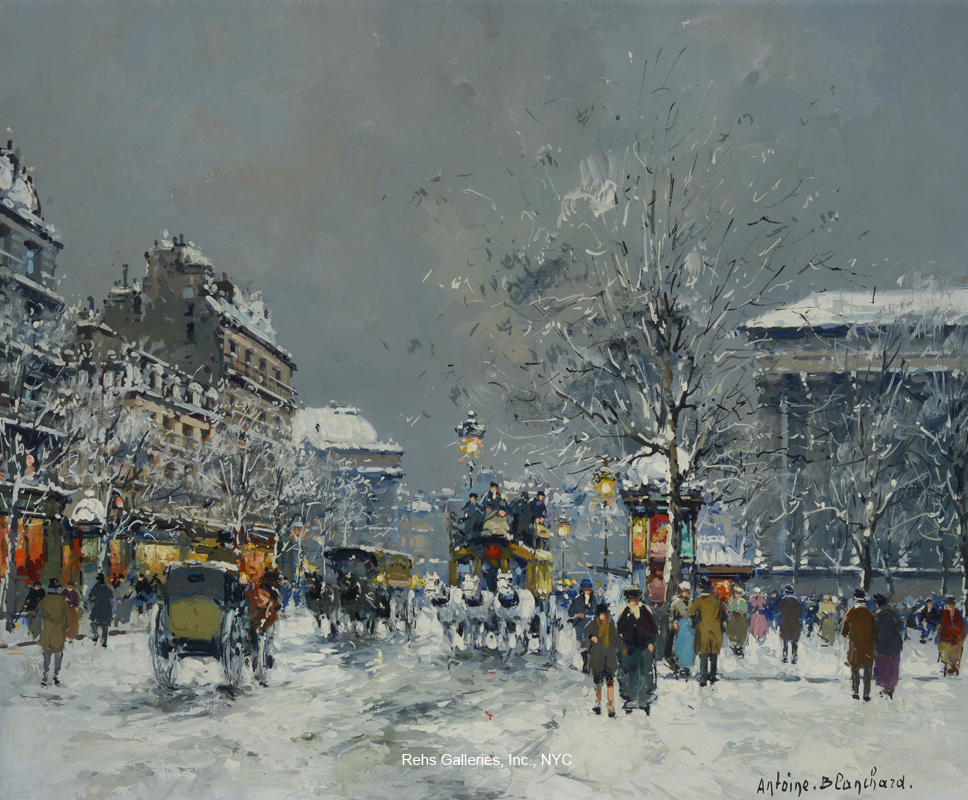Source: Place de la Madeleine, Hiver – another great winter scene by Antoine Blanchard (1910-1988) finds a new home last week.
La Madeleine, a church dedicated to St. Mary Magdalene, is an impressive building in Paris’ financial district. It is located at the Place de la Madeleine, close to Palais Garnier and Place de la Concorde.
In 1764, during the reign of Louis XV, La Madeleine’s construction began. The initial design was formulated by Pierre Constant d’Ivry (1698-1777), who was inspired by Jules Hardovin-Mansart, (Louis XIV’s architect) design of the St. Louis des Invalide Church, built from 1676-1691. When Constant d’Ivry died in 1777, the plans were dismissed by d’Ivry’s successor, Guillome-Martin Carnavalet, who preferred modeling it after the Panthéon.
In 1790 everything, except the foundation, was destroyed. All further construction stopped during the French Revolution and it wasn’t until 1806 when Napoléon decided that a Temple of Glory to his Grand Army should be built that the project was revisited. Pierre-Alexandre Vignon (1763-1828) was commissioned to draw up plans. The new structure was to be based on the Maison Carree, an ancient Roman temple in Nimes. However, upon completion of the basic structure of the Arc de Triomphe in 1808 (which commemorated the French Army), the “Temple of Glory” needed a new purpose. Following the Restoration, the period in France when there was a strong conservative reaction and the Catholic Church was re-established as a strong force, Louis XVIII decided that the Madeleine should be a church. It was briefly suggested, in 1837, that La Madeleine become the first railway station in Paris, but in 1842 it was finally and officially consecrated as a church.
There are fifty-two Corinthian columns around the church, each 20 meters high, which support a sculpted frieze. On the bronze doors is a bas-relief by Henri de Triqueti that represents the Ten Commandments.

